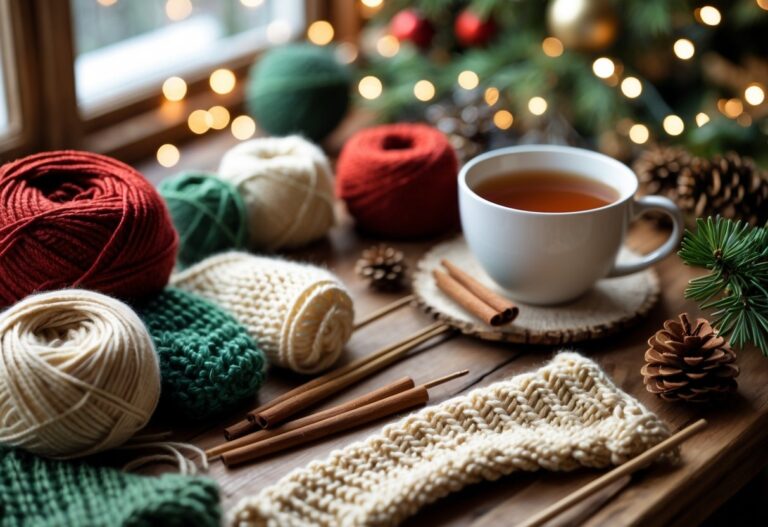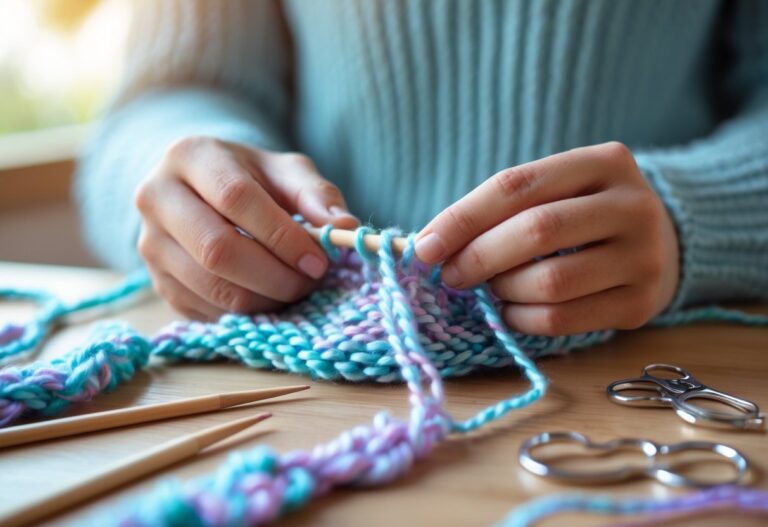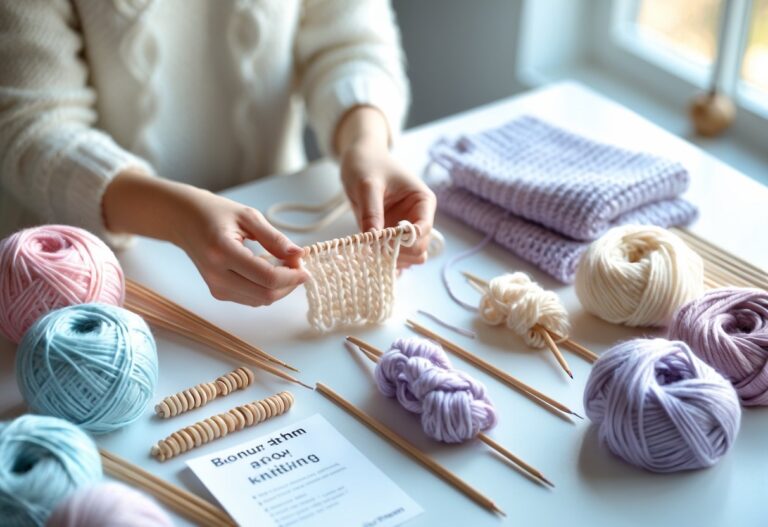Knitting, often perceived as a simple hobby, is indeed much more than a pastime. It holds a multitude of therapeutic benefits that can enhance one’s mental, emotional, and physical well-being. From reducing stress to fostering a sense of accomplishment, knitting offers a comprehensive means of self-care that transcends its traditional role as a craft.
At its core, knitting involves repetitive motions that can induce a meditative state, helping knitters enter a zone of calm and relaxation. This practice can significantly reduce anxiety and lower stress levels, making it a valuable tool for mental health management. Additionally, the rhythmic patterns of knitting have been known to release serotonin, a natural antidepressant, further highlighting its emotional benefits.
Beyond emotional wellness, knitting also promotes cognitive health. As knitters follow patterns, count stitches, and plan projects, they engage and enhance their cognitive functions. This stimulation can improve memory and concentration, serving as a mental exercise that keeps the brain active and engaged. It is particularly beneficial for older adults, as it can help in maintaining cognitive agility.
Moreover, the physical act of knitting can aid in pain management and improve dexterity. The gentle movements involved in knitting can be particularly beneficial for individuals suffering from arthritis or similar conditions, as it promotes hand and finger flexibility while providing a manageable form of exercise. Over time, consistent knitting can lead to better hand function and reduced joint stiffness.
This blog post will delve deeper into the myriad facets of knitting as a therapeutic practice. We will explore how this activity can serve as a form of self-care, examining its mental, emotional, and physical benefits in detail. Whether you are a seasoned knitter or a curious beginner, this exploration will offer valuable insights into how knitting can integrate seamlessly into a holistic wellness routine.
Historical Background of Knitting
Knitting, as an artisanal craft, boasts a rich and diverse history dating back to ancient civilizations. Although the precise origins of knitting are somewhat nebulous, archaeological evidence points to the early practice of this craft as far back as the 5th century in regions such as Egypt and the Middle East. Initially, knitting was predominantly a utilitarian activity, serving the primary function of garment creation. The oldest known knitted items include socks and stockings, which were essential for providing warmth and protection.
The Medieval period saw the craft penetrating Europe, largely popularized by itinerant craftsmen. By the Renaissance, knitting had evolved not just as a functional endeavor but as an esteemed skill, with intricate patterns and techniques gaining recognition. Monasteries played a crucial role in preserving and advancing knitting practices, evidenced by religious garments and tapestries of the time.
During the Industrial Revolution, the advent of mechanized knitting looms marked a significant transformation. While machines revolutionized the mass production of textiles, hand knitting retained its standing as a cherished hobby, a contrast to the fast-paced industrial output. This era witnessed a shift, where knitting began to symbolize not just necessity but also leisure and creative expression.
The 20th century heralded knitting as a popular pastime, particularly among women, transcending its traditional boundaries. The World Wars underscored the importance of knitting for producing military socks and scarves, bringing communal and therapeutic aspects to the forefront. Over time, knitting circles and community groups thrived, reinforcing its role as a vehicle for social interaction and emotional well-being.
Today, knitting continues to flourish both as an artisan craft and a therapeutic art. Its historical trajectory, from a utilitarian necessity to an emotional outlet, underscores its multifaceted nature. The historical context of knitting thus provides an essential foundation for appreciating its contemporary significance as more than just a hobby.
Mental Health Benefits of Knitting
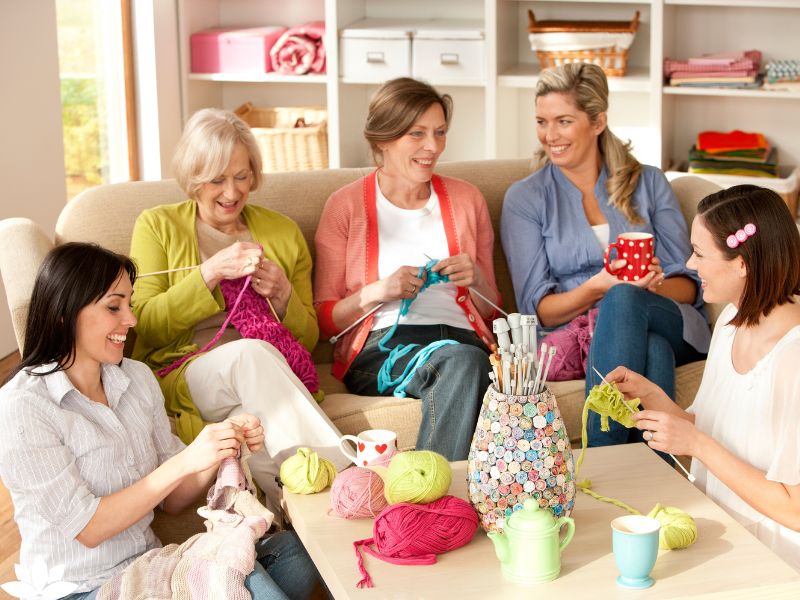
Engaging in knitting, often classified as a therapeutic art, can significantly contribute to mental well-being. The repetitive nature of needlework is known to create a calming and meditative state, which is beneficial in reducing anxiety and alleviating stress levels. The deliberate, rhythmic movements involved in knitting encourage a meditative focus, similar to practices like mindfulness and yoga.
Research has shown that knitting can foster mindfulness by requiring individuals to concentrate on the sequence of stitches and patterns. This form of mindfulness can help interrupt the cycle of worry and intrusive thoughts, which are common in conditions like anxiety and depression. One study conducted by the Mayo Clinic found that engaging in such mindful practices could lower stress hormones, thereby promoting a sense of tranquility and well-being. In fact, the University of Sydney’s study concluded that those who knit frequently report feeling calmer and more relaxed than non-knitters.
Moreover, the mental engagement demanded by knitting serves as a constructive distraction from negative thought patterns. By keeping the mind occupied with a creative and purposeful activity, knitting can reduce the focus on stressors and anxieties, providing a mental respite. This diversion from everyday stressors offers a valuable outlet for processing emotions and thoughts in a constructive manner.
Knitting also serves as a meditative practice by fostering a connection between the mind and body. The repetitive actions can mimic the effects of meditation, slowing down the heart rate and promoting a state of relaxation and mental peace. Engaging in this therapeutic art can create moments of stillness and presence, which are invaluable in combating the fast-paced nature of modern life. Through the repetitive motion of this hobby, individuals can achieve a state of mental relaxation analogous to more traditional forms of meditation.
Emotional and Social Dimensions of Knitting
Knitting, often perceived as a solitary activity, has profound emotional and social implications that extend far beyond its status as a mere hobby. Engaging in this therapeutic art provides a sense of emotional comfort, allowing individuals an outlet to manage stress and anxiety. The repetitive nature of knitting stitches is meditative, promoting mental well-being and emotional tranquility. The satisfaction derived from creating tangible objects with one’s own hands fosters a sense of achievement and self-worth, contributing significantly to emotional health.
Moreover, the social dimensions of knitting are equally compelling. Many people join knitting groups or circles, where the experience transcends personal gratification to encompass community support. These social gatherings offer a platform for individuals to share their projects, exchange techniques, and provide mutual encouragement. Such environments often cultivate a sense of belonging and camaraderie, combating feelings of isolation that can be prevalent in modern society.
The emerging concept of ‘craftivism’—a blend of craft and activism—illustrates how knitting can be a medium for social change. Craftivists use knitting to address societal issues, creating items that convey powerful messages or raise awareness for causes. This collective activity not only unites people with a shared purpose but also amplifies their emotional and social bonds through a common goal.
Through these emotional and social dimensions, knitting morphs from a basic pastime into a therapeutic art form. It not only enriches personal well-being but also fosters a sense of community and collective purpose. By knitting alone or with others, individuals forge deeper emotional connections and social ties, highlighting the multifaceted benefits of this creative and meaningful activity.
Knitting for Cognitive Health
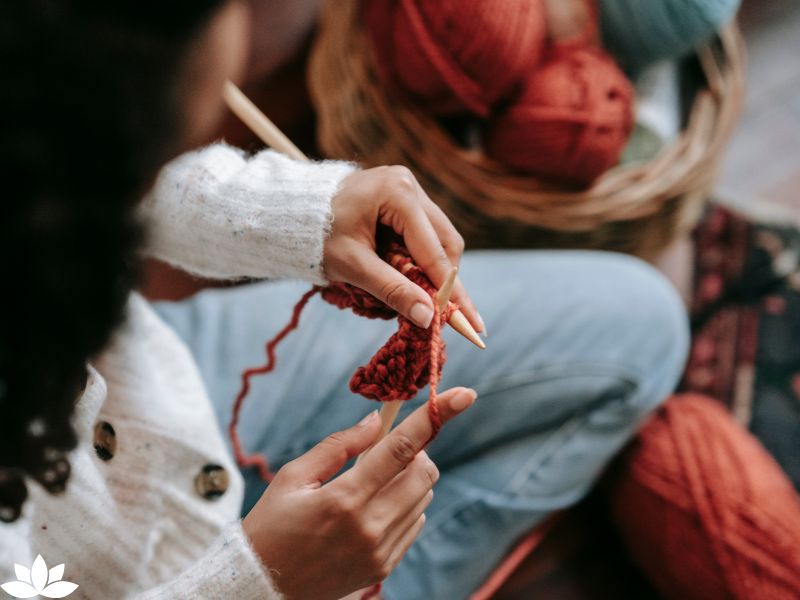
Knitting, often perceived as a mere pastime, offers profound cognitive benefits that extend far beyond its leisurely appeal. Engaging regularly in this therapeutic art can significantly enhance cognitive functions such as concentration, memory, and problem-solving skills. The intricate patterns and repetitive counting required in knitting demand a level of focus that keeps the brain actively engaged, making it an excellent mental exercise.
One of the ways knitting benefits the brain is through improved concentration. The process of following complex stitch patterns necessitates sustained attention, thus training the brain to maintain focus over extended periods. This heightened concentration can be particularly advantageous in today’s fast-paced world where distractions are rampant.
Memory enhancement is another notable benefit of knitting. Remembering intricate patterns and sequences activates the brain’s memory centers, promoting better recall and retention abilities. This mental exercise can be especially beneficial for older adults, as it helps slow down cognitive decline by keeping neural pathways active and healthy.
Knitting also fosters improved problem-solving skills. As knitters encounter challenges—whether it’s an error in the pattern or a need to adapt a project—they must think critically and devise solutions. This engagement with problem-solving processes not only sharpens cognitive abilities but also boosts creativity.
The potential cognitive advantages of knitting have not gone unnoticed by the medical community. Numerous health professionals now recommend knitting as a cognitive exercise for older adults. For example, several studies have demonstrated that the rhythmic, repetitive actions of knitting can have a calming effect on the brain, reducing stress and anxiety. This positive mental state further enhances cognitive function, making knitting an all-encompassing therapeutic activity.
In essence, knitting transcends its traditional role as a simple hobby. By providing a multifaceted cognitive workout, it stands as a formidable tool for maintaining and improving mental health. Whether one is following a detailed pattern or creating something unique, knitting offers a meaningful way to keep the mind sharp and engaged.
Knitting, often regarded as a pleasurable pastime or hobby, harbors numerous physical health benefits, making it a therapeutic art form. Engaging in knitting tasks has been shown to significantly enhance fine motor skills and hand-eye coordination. The repetitive motion required to manipulate needles and yarn fosters dexterity and precision, which can be particularly beneficial for maintaining hand function.
Furthermore, knitting serves as a gentle activity for individuals suffering from arthritis or other joint issues. The smooth, repetitive movements involved in knitting can act as a form of low-impact exercise, aiding in the reduction of stiffness and pain. Studies have indicated that such activities can promote joint flexibility and reduce discomfort over time. For instance, a study published in the British Journal of Occupational Therapy highlighted that knitting could potentially alleviate symptoms of chronic pain, with the movement helping to keep joints functional and mobile.
Medical professionals often recommend knitting as part of therapeutic regimes. According to Arthritis Australia, knitting can be an effective way to manage pain and improve joint health. The organization advocates for the integration of knitting into daily routines for those with arthritis, suggesting that the gentle, repeated motion is less likely to cause undue strain compared to other forms of exercise.
In essence, knitting is not just the creation of fabric but an exercise for the hands and mind. Regular engagement in knitting can yield physical benefits that extend beyond the hobby itself. This therapeutic art form encapsulates the multifaceted advantages of a seemingly simple activity, signifying its importance in promoting physical well-being.
Knitting in Therapy and Rehabilitation
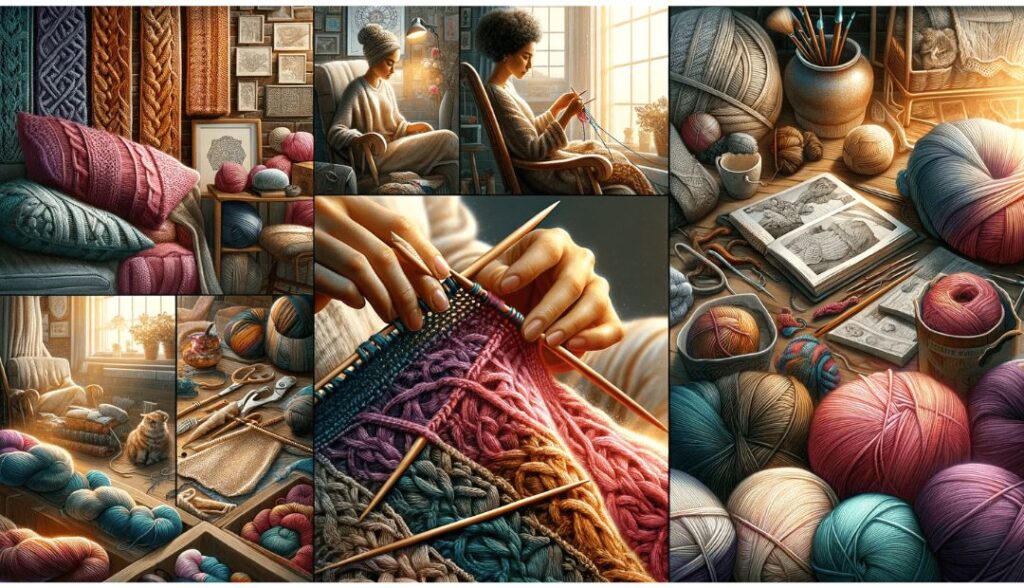
Knitting has found a meaningful place in therapeutic settings, particularly within the realms of occupational therapy and physical rehabilitation. Often regarded as more than just a leisure activity, knitting serves as a therapeutic art that offers numerous benefits to individuals undergoing various forms of treatment. Its repetitive, rhythmic movements can facilitate motor skill improvement, cognitive engagement, and emotional stability.
In occupational therapy, knitting is increasingly used as a medium to enhance fine motor skills, hand-eye coordination, and muscle dexterity. Patients recovering from hand or wrist surgeries, for example, often find knitting to be a useful exercise. The act of manipulating needles and yarn requires precision, thereby encouraging the slow rebuilding of hand strength and agility. Additionally, the repetitive nature of knitting provides a calming effect, which can be particularly beneficial for individuals coping with stress or anxiety disorders.
There are myriad case studies illustrating the impact of knitting in rehabilitation. One particularly notable example is that of a stroke survivor who used knitting to regain mobility in one of her arms. During her rehabilitation, the therapist introduced knitting as a dual-purpose tool: one for physical rehabilitation and the other to provide a sense of accomplishment and well-being. Over time, the patient not only regained a significant amount of her dexterity but also discovered a new outlet for self-expression and mental relaxation.
Knitting is also integrated into holistic therapies aimed at treating emotional and psychological conditions. By merging this craft with other medical treatments such as cognitive-behavioral therapy or mindfulness-based stress reduction, the benefits are often amplified. For individuals dealing with trauma, knitting can act as a form of distraction and engagement, diverting the mind from distressing thoughts and creating a space for mental respite.
Furthermore, group knitting sessions in therapeutic settings enhance social interaction and provide a sense of community. Patients sharing their projects and experiences can foster emotional support and shared understanding, proving that knitting is a multifaceted therapeutic art, capable of enriching both the body and the mind.
Getting Started with Knitting: Tips and Resources
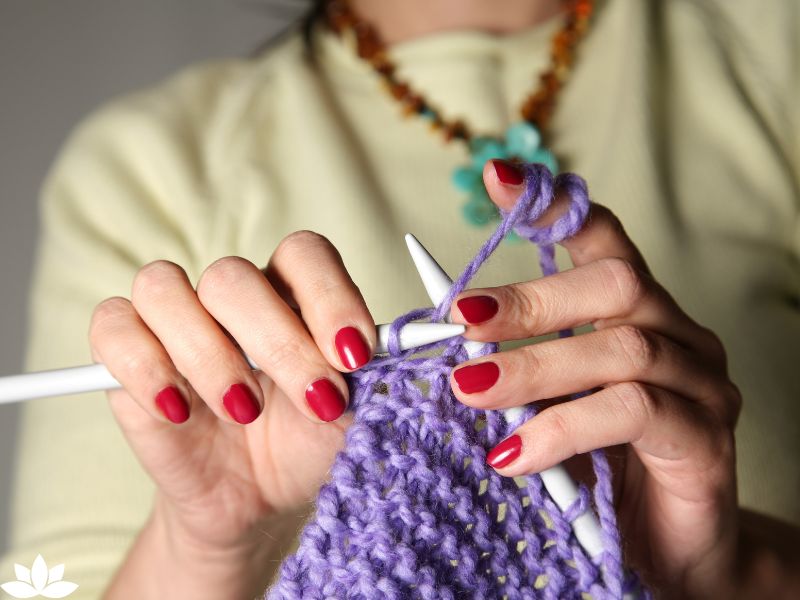
Embarking on the journey of knitting can be both exciting and daunting for beginners. It is essential to begin with the right tools and materials to ensure a smooth start. At its most basic, knitting requires two needles and some yarn, but the diversity of options can be overwhelming. For novices, it is recommended to start with medium-sized needles, usually size 8-10 US, and a medium-weight yarn such as worsted weight. These middle-ground choices are easier to handle and allow for visible progress without the added complexity of finer or bulkier materials.
Additionally, some other essential tools include stitch markers, a measuring tape, a tapestry needle for weaving in ends, and a row counter. Beginners should also familiarize themselves with basic stitches like the knit stitch and the purl stitch, as these form the foundation of most knitting projects.
There is a wealth of resources available to help newcomers master the techniques and nuances of knitting. Books such as *”Stitch ‘n Bitch: The Knitter’s Handbook”* by Debbie Stoller and *”The Knitting Answer Book”* by Margaret Radcliffe offer comprehensive guides for beginners. Online platforms like YouTube, Craftsy, and Ravelry provide countless tutorials and patterns, catering to various skill levels and interests. Many local yarn stores also host classes and social knitting groups, providing an opportunity to learn in a community setting and receive personalized instruction and encouragement.
The process of mastering knitting can be highly rewarding. As you progress, you can see the tangible results of your efforts—whether in the form of scarves, hats, or more intricate patterns. But beyond the products created, the practice of knitting itself offers significant therapeutic benefits. It can be a meditative and calming activity that helps reduce stress and promote mental well-being. Every stitch is a step towards not only a finished object but also towards a more relaxed and focused state of mind.
So, gather your materials, find a pattern that excites you, and begin your knitting adventure. Embrace each stitch as it comes, and enjoy the journey of transforming yarn into a beautiful, handmade creation.

